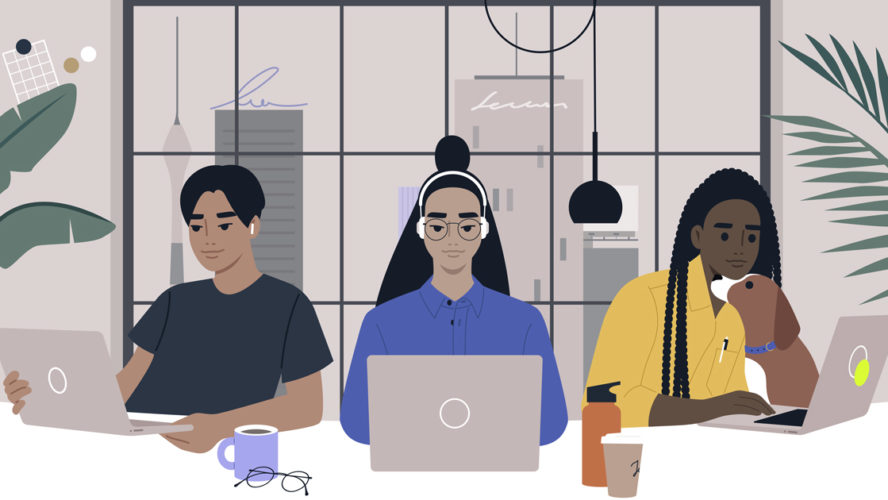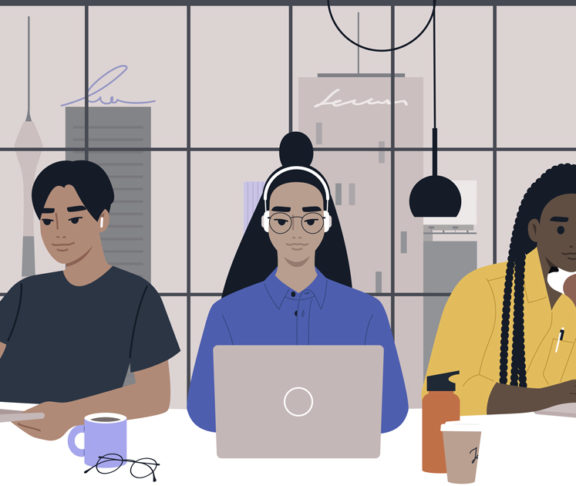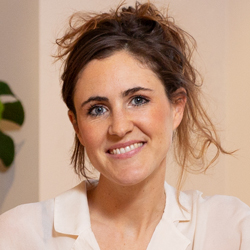
Claire McPoland
Design Lead, The Office Group
Companies must ensure that their office meets the needs of their people and allows them to be productive, thrive and enjoy coming to work.
Our philosophy is to give people the freedom to do their best work, in their best way. As a team, we have developed a list of alternate work settings for clients that offer ways to reimagine the office to suit their different work styles. We think about the intrinsic design of our spaces and the needs of the people who will use them — not just the physical positioning of walls and task chairs.
I think companies are all looking for the same thing: a place where employees can thrive and have access to amenities and a variety of spaces they can work. They want workspaces that are professional, yet playful. We set ourselves the challenge of keeping it classic and timeless but interesting.
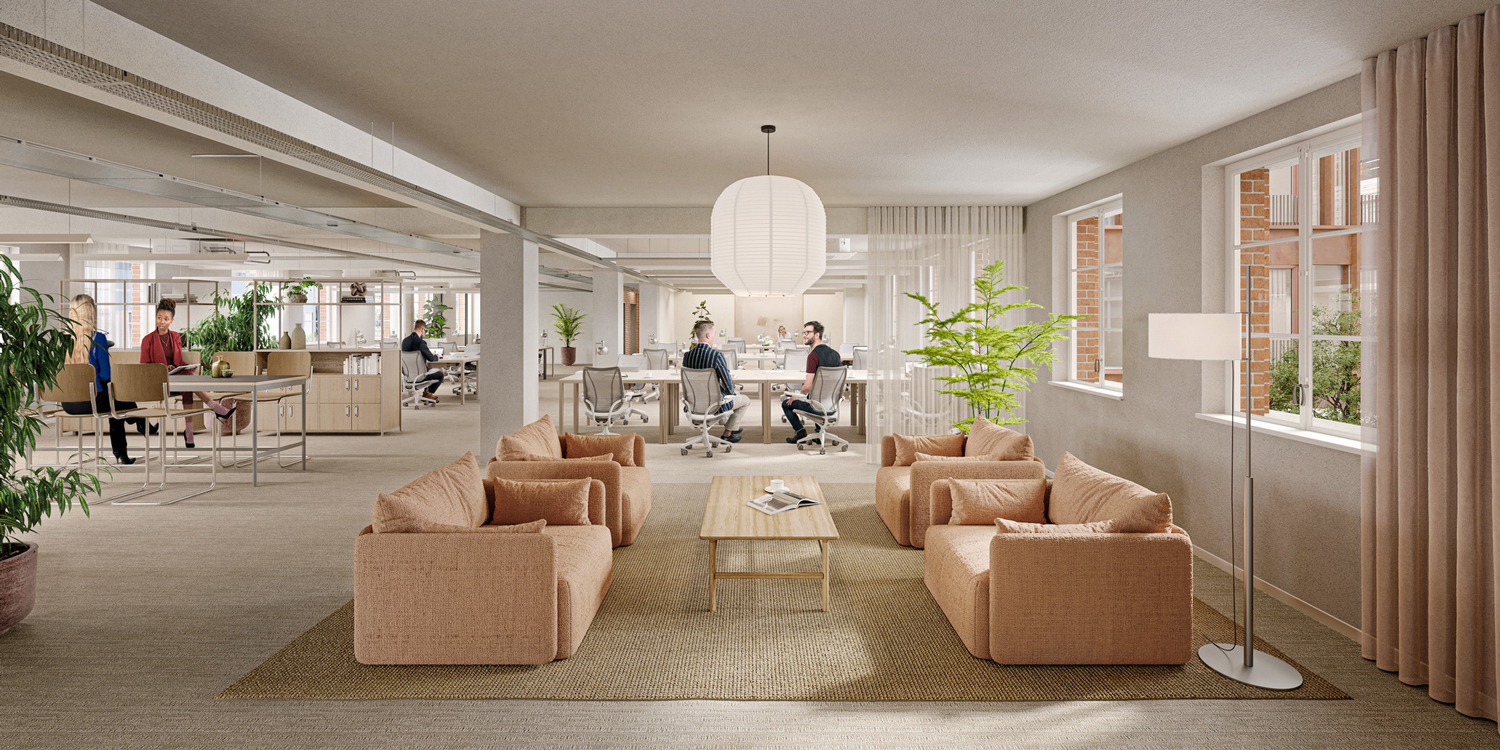
Zones and spaces for various purposes
We are definitely seeing a demand from our members for more open spaces in the buildings to meet, create and collaborate. But collaboration is as much a chance encounter at the coffee machine as a formal ideation session in a dedicated breakout space. Being together in one space that encourages social interaction is key.
Part of this is creating different zones for different purposes, which enhance productivity — be it for ‘quiet’ working time, shared thinking or that essential downtime.
Our buildings include ample phone and focus booths for virtual calls for when you need quiet space to work, as well as larger meeting and project rooms for team working. Alongside that, there are private offices, as well as co-working lounges and breakout spaces.
Creating a functional workspace
High-level storage is an opportunity to dress the space with plants — accents of green can really imbue a sense of calm into an office environment. Elements such as curtains or moveable walls, which allow the function of a space to change quickly to suit different needs, are being used more.
Where people want to foster the social element and reconnect with colleagues, they could create soft seating zones or replace banks of desks with project team tables. There’s a greater need for people to have personal storage as the ‘clean desk policy’ increases in popularity, so room divides with integrated lockers can be introduced to zone areas, too.
Companies are all looking for the same thing: a place where employees can thrive and have access to amenities and a variety of spaces they can work.
Spaces that encourage social interaction
The journey of moving from one place to another gives you time to refocus and is a design consideration in all of our buildings. Our cafes are great for one kind of conversation, and our lounges are good for another.
At our own head office, we are bringing the kitchen and tea points front and centre to the experience, encouraging teams to take time to reconnect, for example.
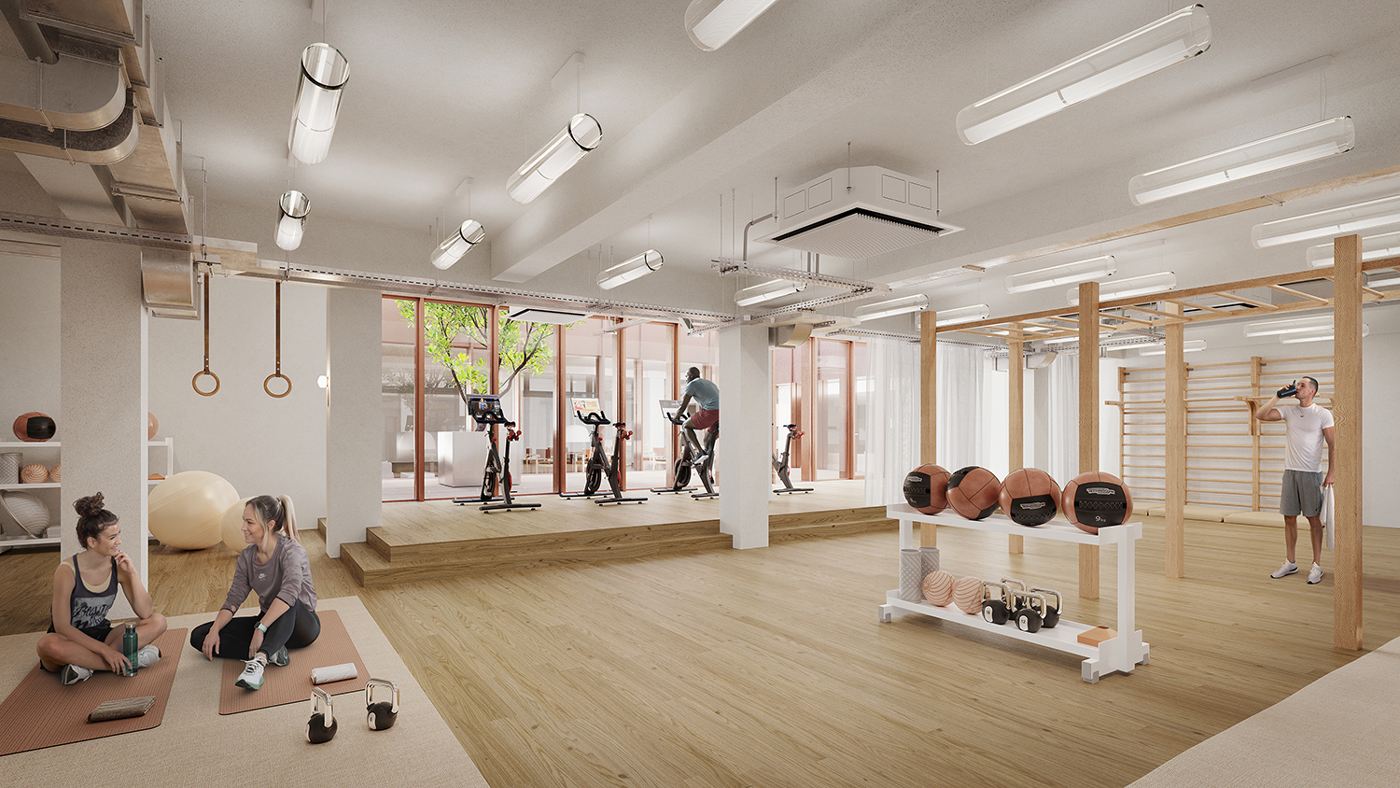
Design that balances comfort and productivity
There is a big emphasis on ‘resi-mmercial’ design at present, which combines residential and commercial spaces. People want elements they have had in their living room — such as comfortable textiles, warm colour palettes, good heating, lighting and acoustics — at the office. They also want the amenities that are not present at home but are crucial to a good work-life balance: fitness studios, meditation rooms, cafes and outdoor spaces.
Ultimately, great design should be accessible to everyone — now, more than ever. The industry should take note of this and work to bridge the gaps to create an exceptional office environment for all.
